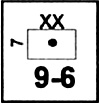
Early June.
In spite of warnings from the front, the Finnish high command continues to ignore the Soviet threat, preferring to believe that their theater will remain quiet yet another year.
5 June.
The Soviets begin radio silence, an almost sure sign of an upcoming Russian attack. The warnings are still ignored.
9 June.
The Soviets begin a massive artillery and air preparation of the front along the Karelian Isthmus.
Soviet air strength is impressive: 13th Air Army and 2nd Fighter Aviation Army Corps consist of 158 fighters, 298 assault aircraft, 265 bombers, 20 reconnaissance aircraft. These units are supplemented by the Red Banner Baltic Fleet Air Force of 500 aircraft and two bomber and one assault aviation from Long Range Aviation. The total air strength is 1,547 aircraft of all types.
Against this force the Finnish air force can field 118 aircraft on this front: 36 Blenheims, 13 Ju88As, 9 Do17Zs, 4 Pe2s, 8 DB-3s and IL-4s; 30 Bfl09Gs, and 18 Brewster Buffaloes.
10 June.
The Black Day of the Finnish Army. Leningrad Front launches a full-scale Soviet attack on the Finnish IV Corps holding the western portion of the Karelian Isthmus. They quickly achieve a breakthrough. Terijoki and Yalkena fall.
11 June.
Finnish command orders the Armored Division forward from Viipuri and recalls one division from Aunus and 3rd brigade from northern Finland.
13 June.
A second line of Finnish defenses repulse Soviet attacks.
Hitler agrees to the shipment of infantry anti-tank weapons to Finland.
14-15 June.
Renewed attacks smash the Finnish defenses at Kutersel'ka. The Soviets begin to drive up the rail line toward Viipuri.
16 June.
Mannerheim orders a withdrawal to the VKT Line.
Gefechtsverband Kuhlmey arrives in Finland with 23 Ju87D-5s (from I/SG3) and 23 Fw190A-6s and F-8s (A-6s from 4./JG54, 5./JG54; F-8s from I./SG5); supported by 19 SM.84 transports from TGr10 and 5 Bf109G-8 recce aircraft from NAufGr5. This is an elite unit, commanded by Oberstleutnant Kurt Kuhlmey, Geschwader-Kommodore of SG3 (Knights Cross with Oak Leaves and Swords), and includes at least three experten with over 50 kills apiece.
18 June.
The Soviet break through the main Finnish positions on the Karelian Isthmus and advance toward Viipuri.
Finns evacuate the Svir bridgeheads.
The Finnish government asks Germany for six divisions to help stem the advance; at the same time they are reestablishing contact with the Soviets.
19 June 1944.
German torpedo boats and aircraft begin to deliver approximately 9,000 panzerfausts and 5,000 panzerschrecks to the Finns.
20 June 1944.
Viipuri falls.
21 June 1944.
Meretskov's Karelian Front, finally advances against the Finnish VI Corps between Lake Ladoga and Lake Onega.
Over the next 3 or 4 days, the Soviets occupy the islands in Viipuri Bay.
The Finns asks Hitler for closer ties, willing to sacrifice diplomatic dependence on Germany for aid in stopping the Soviets. Ribbentrop flies to Helsinki for negotiations.
21 June.
The Soviets occupy Viipuri.
22 June.
The Soviets mount a massive attack in west central Russia, beginning the battles that will be referred to as "The Destruction of Army Group Center."
23 June.
Dietl, commander of 20th Mtn Army dies in a plane crash in the Austrian Alps. The crash is kept secret.
Soviet 7th Army begins to cross the Svir, but the offensive in this sector hits mostly air. The Finns have withdrawn.
The Soviets tell the Finns they will not negotiate until the Finns announce in writing that they are ready to capitulate.
The Soviets complete their occupation of the islands in Viipuri Bay, supported by gunboats Volga, Zeya, Kama, Oka.
26 June.
President Ryti gives Ribbentrop a letter stating that he will not make peace without the consent of Germany. Several air units, an infantry division and an assault gun brigade make preparations to transfer to Finland. (The Germans renamed Assault Gun battalions as brigades but without necessarily increasing their strength. In cases where an increase in strength did not occur, Europa leaves the battalions rather than subbing a 2-1-10 AG X for a 2- 1-10 AG II; hence the appearance of a battalion in the scenario OB).
25 June.
Ten Soviet divisions near Repola in central Finland, but gain only limited success.
28 June.
Generaloberst Lothar Rendulic replaces the deceased Dietl at the head of 20th Mountain Army.
30 June.
The Finns evacuate Petrozavodsk.
4 July.
The Soviets occupy the islands in Vyborg Bay and attempt further landings on the mainland. These are defeated by the timely arrival of the German 122nd Infantry Division.
In Estonia, the Soviets take Narva.
10 July.
Finnish forces withdrawing from Aunus now occupy the U-Line directly north of Ladoga.
11 July.
The front is beginning to stabilize on both sides of Lake Ladoga.
15 July.
Finnish intelligence detects signs that the Soviet offensive will slacken -guards units are being pulled out and replaced with garrison troops
1 August.
President Ryti resigns. Mannerheim is chosen to replace him.
10 August.
In their last operations, Finnish forces eliminate two Russian rifle divisions east of Ilomantsi.
2 September 1944.
The Finnish Prime Minister Antii Hackzell announces that Finland is breaking diplomatic relations with Germany and demands the withdrawal of all German troops.
4 September.
A Finnish-Soviet cease fire takes effect.
19 September.
The Finnish delegation in Moscow signs an armistice.
8 October 1944.
Finnish troops retake Kemi at the head of the Gulf of Bothnia. This is the last port in Finland held by the Germans.
15 October 1944.
In the Arctic, the Soviet 14th Army takes Petsamo.
22 October.
Advanced units of the 14th Army reach the Norwegian border.
25 October.
Soviet troops enter Norway and take Kirkenes. Soviet operations in Finland draw to a close.
Back to Europa Number 46 Table of Contents
Back to Europa List of Issues
Back to MagWeb Master Magazine List
© Copyright 1996 by GR/D
This article appears in MagWeb.com (Magazine Web) on the Internet World Wide Web. Other articles from military history and related magazines are available at http://www.magweb.com